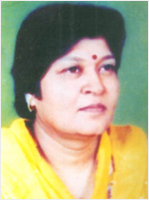From the Principal desk
 |
A teacher is said to have taught only when the Student has learnt. This is the essence of child centered pedagogy. Learning leads to realization which automatically ensures retention and continuity and hence paramount recognition and application are also its bye-products. As we are aware, today’s students life in this world is very different from the one in which we all grew up. The world has witnessed tremendous amount of changes in the last decade and today’s students are already in the 21th century. New technologies have revolutionized access to and use of information technology bringing the rest of the world at our doorsteps and work places. So in this fast changing scenario the schools cannot work with the 20th century minds set. The mind set that we need to repeat what we have learned, must change. The Board has been making concerted efforts towards bringing a paradigm shift in different aspects of school education. Some of the key interventions are shifting the focus from performance to learning, from instructionism to constructivism and changing the mind sets of repetitiveness and stereotypes. Schools are expected to be pro-active so as not to limit themselves as instruments of delivery of content but strive towards building capacity so that students become autonomous learners and also can enjoy the process of learning. It is very important that in today’s world, mathematic and Science Education occupies very important place in quality framework besides language and technology integration. Only by transforming the manner in which curriculum content is presented and transacted in Science and Mathematics, that school education will be able to meet the requirements of the new global order. As we discuss the pedagogy, we should pay particular attention to the new focus on constructivism in the teaching. When we focus too much on instructionism, learning is confined to the prescribed curriculum and learners memorize facts and carry out procedures without understanding how or why it happens. In the new situation, there is an urgent need to make the classroom an exciting and vibrant place with a conducive ambience for learning. When the children construct knowledge with the help of teachers in the classroom, it encourages thinking, understanding, exploration, problem solving, creativity and innovation. We must prepare ourselves for this key shift by evolving appropriate strategies. There must be a clear distinction between performance and learning. Some of the school are giving more importance to performance by recognizing the talents of a few students with their result in the external examination. This attitude needs to be changed. Instead of focusing all the time on ‘More Of the Same ‘ (MOTS), Attitudinal change be brought out by introducing ‘Higher Order Thinking Skills’ (HOTS), not only in the teaching learning process but also in the assessment system. Thus some of the important goals in the new situation is to ensure the quality aspect in the teaching of Science and Mathematics. While the content is very important and there is a national norm for this but this richness will not be reflected at the grass-root level unless and appropriate PROCESS is put into practice and it is handled by motivated PEOPLE. When we talk of people, the learner is definitely at the centre but it also includes teachers and heads of institution. The transaction of curriculum should not be restricted to teacher-learner interaction alone, but also learner interaction with himself or herself i.s. self-learning is also very important. |
| Mrs. Manju Agrawal |












